Adult T-Cell Leukemia/Lymphoma (ATCL)
You are here
Definition
Adult T cell leukemia/lymphoma (ATCL) is a T cell lymphoma with leukemic manifestations involving lymph nodes, skin, spleen and liver. The neoplastic circulating cells vary in size, but characteristically are large multilobulated lymphoid cells. They are T cells, nearly always T helper cells (CD 4 positive) and show aberrant expression of T cell antigens.
Sample Cases
Click here for instructions on how to download the free FCS Express Reader to view and manipulate the sample cases.
| Case Name (click on case name to open) |
Comments | Size |
| ATCL1 | 4.74 MB | |
| case 15 | Mature T cell lymphoid leukemia This case was kindly provided by the ASCP Press. It is part of Flow Cytometry in Clinical Diagnosis by John Carey, Phil McCoy and David Keren. |
838 kB |
Epidemiology
HTLV1 is strongly associated with ATCL. ATCL is localized to the Caribbean, southeastern US, and most notably southern Japan. The prognosis is poor with most patients dying within 1-2 years.
Possible causes
The cause is unknown.
Morphology
These cells are predominantly medium to large cells with irregular, pleomorphic nuclei with prominent nucleoli. Mitotic figures may be present.
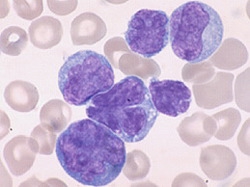 |
|
| Example morphology of ATCL cells. | Example morphology of ATCL cells. |
Immunophenotyping
The CD45 vs SSC gating dot plot identifies a population of large cells (green population) and small lymphocytes (red population). The ATCL will fall in the larger cell region as they have bright CD45 and moderate to high SSC.
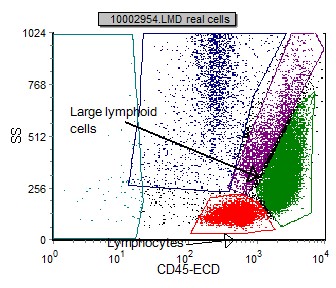 |
| Example case of ATCL CD45 vs SSC gating dot plot. |
Aberrant expression of T cell antigens in ATCL with CD3 positive and CD7 negative antigen expression (CD3 +; CD7 + expected on normal T cells). The ATCL cells express CD 25 (the interleukin 2 receptor).
Below are selected example dual paramenter dot plots of a case of ATCL:
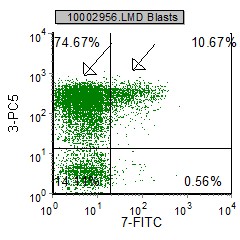 |
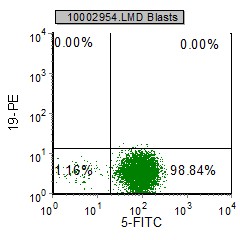 |
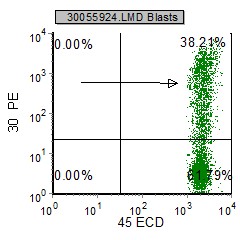 |
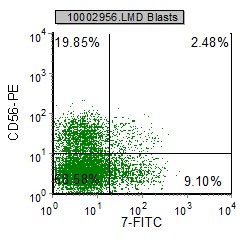 |
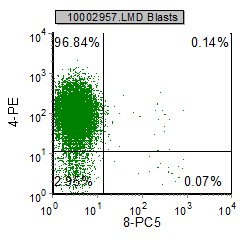 |
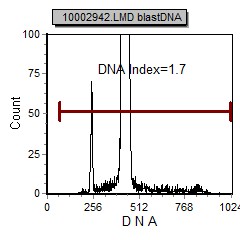 |
| The pan T cell markers are generally expressed; however, aberrant marking of one or more is common. Loss of CD7 is the most common aberrancy. | These large cells express CD4 , CD8 is not expressed. | This cell type is proliferative and agressive as seen by the aneuploidy and high SPF. Some cases of ACTL also express CD30. |
Other relevant tests
Genetics: TCR genes are clonally rearranged in most cases. Numerous chromosome abnormalities are usually seen.
Sub-classification
There are two variants seen based on morphologic features: T-zone variant and the Lymphoepithelioid cell variant.
Flow Diagnosis
Flow cytometry immunophenotyping shows large cells CD45 bright and SSC moderate to high. The pan T cell markers are expressed, but aberrant phenotypes are common. CD4 is usually expressed and not CD8. CD30 and CD25 can be expressed in some cases.
